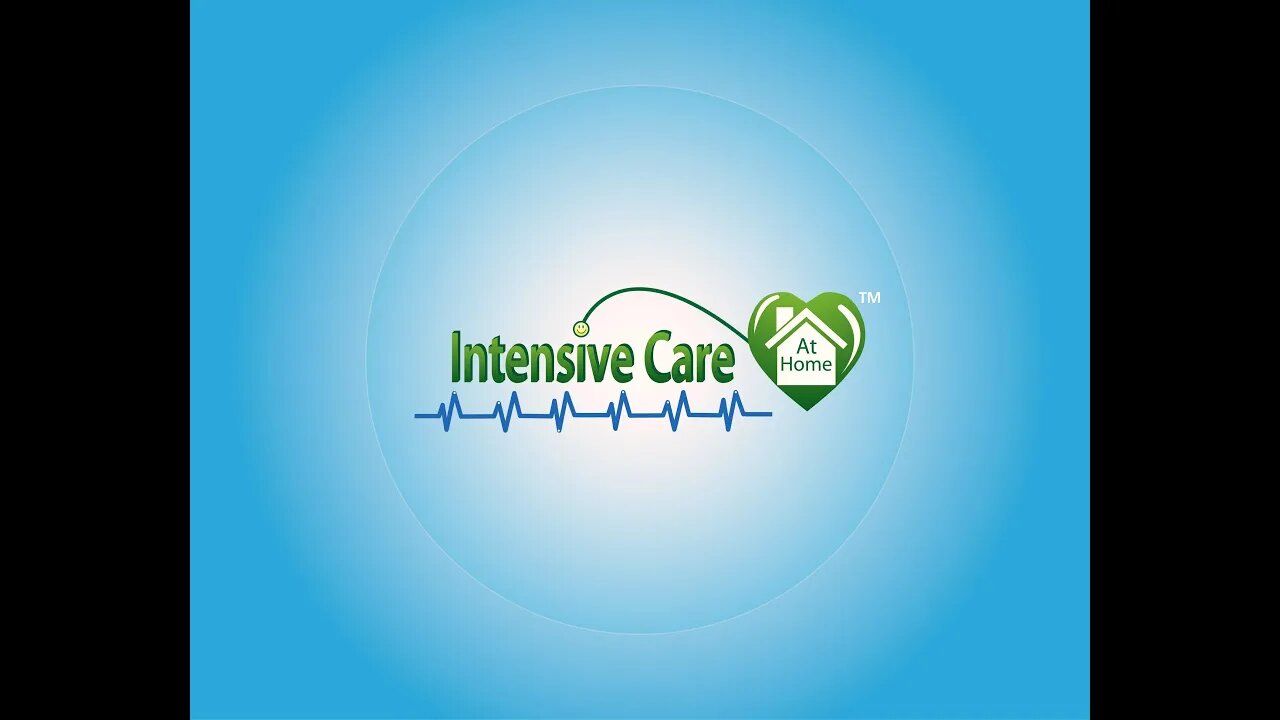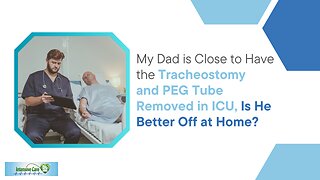Premium Only Content

Can You be Discharged Home from Hospital with Ventilator, Tracheostomy and Feeding Tube?
Can You be Discharged Home from Hospital with Ventilator, Tracheostomy and Feeding Tube?
Book your free 15-minute phone consultation here
http://intensivecarehotline.com/scheduling-appointment/
Call directly 24/7
+1 415-915-0090 USA/Canada
+44 118 324 3018 UK
+6141 094 2230 Australia
Email support@intensivecarehotline.com
Get 1:1 consulting and advocacy
1:1 phone counselling
http://intensivecarehotline.com/one-on-one-counselling/
Become a member for families of critically ill Patients in Intensive Care
https://intensivecarehotline.com/intensivecaresupport-org-membership/
Immediate action steps http://intensivecarehotline.com/take-control-take-charge/immediate-action-steps/
https://intensivecareathome.com
And if you need a medical record review, click on the link and we can help you with reviewing your loved one’s medical records while they’re in ICU.
https://intensivecarehotline.thrivecart.com/review-of-medical-records/
Facebook Page: https://www.facebook.com/ICUhotline
Twitter: https://twitter.com/icuhotline
#icu
#intensivecare
#criticalcare
In this week’s blog I want to answer a question that we get quite frequently from our readers and also clients
Can you be discharged home from hospital with ventilator, tracheostomy and feeding tube?
Many families in intensive care have loved ones in ICU/PICU with long-term ventilation and tracheostomy requirements.
Their loved ones usually experience either difficulties, delays or complete failure in weaning off the ventilator and tracheostomy.
What are the reasons for mechanical ventilation and tracheostomy?
Causes of admission to ICU/PICU for mechanical ventilation and tracheostomy are: acute respiratory failure with underlying chronic co-morbidities 176 (24.4%); exacerbation of Chronic Obstructive Pulmonary Disease 222 (34.4%); neuromuscular diseases 200 (27.8%) (i.e. Guillan Barre syndrome, Motor neuron disease or MND); surgical patients 77 (10.7%); thoracic dysmorphism 28 (3.8%); obstructive sleep apnea syndrome 16 (2.2%). Percutaneous tracheostomies were 65.9%. Major complications after tracheostomy were 2%. 427 tracheostomies were evaluated for decannulation: 96 (22.5%) were closed; 175 patients (41%) were discharged with home mechanical ventilation; 114 patients (26.5%) maintained the tracheostomy despite weaning from mechanical ventilation and 42 patients (10%) died or lost.
Reference: https://www.ncbi.nlm.nih.gov/pubmed/20122822 Tracheostomy in patients with long-term mechanical ventilation: a survey.
Further to this reference above, what leads to prolonged mechanical ventilation, tracheostomy and then the ability to wean a critically ill Patient off the ventilator eventually are the inability to wean somebody off the ventilator.
This often begins with prolonged induced coma, intubation (insertion of the breathing tube), breathing tube/endotracheal tube and the failure to extubate (removal and the breathing tube).
Generally speaking intubation for respiratory failure leads to induced coma, mechanical ventilation and this also goes hand in hand with a nasogastric tube (NG tube) for feeding.
Again, if weaning off the ventilator and the breathing tube (extubation) can’t be achieved, the next step is to perform a tracheostomy!
When is the right time to perform a tracheostomy?
Here are some articles and videos for you to answer that question
How Long Can A Breathing Tube Or An Endotracheal Tube Can Stay In?
HOW LONG SHOULD A PATIENT BE ON A VENTILATOR BEFORE HAVING A TRACHEOSTOMY?
WHAT ARE THE RISKS AND BENEFITS OF A TRACHEOSTOMY?
Why Would A Critically Ill Patient In An Induced Coma Need A Tracheostomy In Intensive Care?
When a tracheostomy is done, a PEG tube or feeding tube also known as gastrostomy is done as well.
A PEG is a permanent feeding tube through the abdominal wall into the stomach.
Nevertheless it is often doctors and family preference whether a PEG tube is inserted or a nasogastric feeding tube is left in place to continue feeding.
Anybody on a ventilator with either a breathing tube or tracheostomy is unable to eat orally, hence the nasogastric feeding tube or the PEG feeding tube.
In either case with a tracheostomy, mechanical ventilation and feeding tube a patient can definitely be discharged home with a service like intensive care at home.
Mechanical ventilation, tracheostomy and feeding tube is definitely not an obstacle for intensive home care...
Continue reading at: https://intensivecareathome.com/can-you-be-discharged-from-hospital-with-ventilator-tracheostomy-and-feeding-tube/
-
 14:07
14:07
Intensive Care at Home
3 days agoMy Dad is Close to Have the Tracheostomy and PEG Tube Removed in ICU, Is He Better Off at Home?
31 -
 48:51
48:51
State of the Second Podcast
15 hours agoWhy Does Palmetto State Armory Keep Winning?
8.9K4 -
 32:01
32:01
SB Mowing
25 days agoHer Tears Said It All: “My Prayers Have Been Answered”
30.4K37 -
 3:28:55
3:28:55
Price of Reason
14 hours agoTrump Means Business! Disney's F4 Hail Mary Pass! Assassin's Creed Shadows Art Book SUCKS?
69.1K14 -
 8:00:07
8:00:07
SpartakusLIVE
13 hours ago#1 Shadow BANNED Hero
40.6K1 -
 2:17:46
2:17:46
Kim Iversen
13 hours agoTrump To SMUG Netanyahu: Let's Clear “All” Palestinians From Gaza! | RFK Jr, Tulsi Move On To Round Two
89.2K487 -
 30:25
30:25
Standpoint with Gabe Groisman
1 day agoDemocrats Are Stalling Trump Appointments with Senator Rick Scott
103K24 -
 1:00:24
1:00:24
The StoneZONE with Roger Stone
13 hours agoAnthony Fauci’s Brutal History Of Animal Torture Exposed! | The StoneZONE w/ Roger Stone
74.7K20 -
 1:03:38
1:03:38
Man in America
14 hours agoUSAID Corruption, $21 TRILLION Missing, & the End of the US Global Empire?
105K74 -
 56:38
56:38
Flyover Conservatives
14 hours ago6 Steps to Take Advantage of Trump’s New Golden Age! - Clay Clark | FOC Show
63.4K2